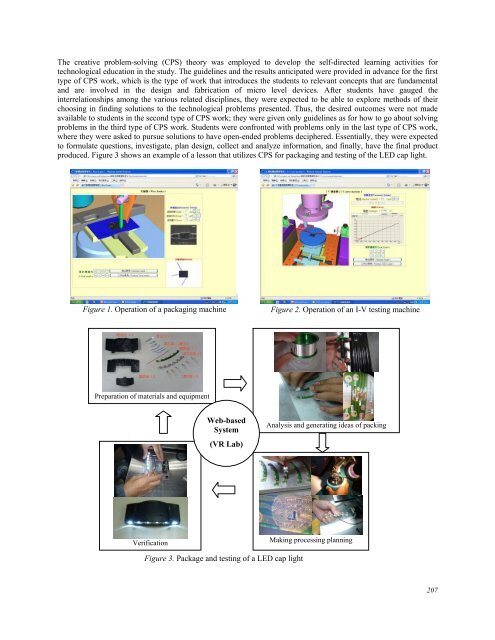Development of a Web-based System to Support Self-Directed ...
Development of a Web-based System to Support Self-Directed ...
Development of a Web-based System to Support Self-Directed ...
Create successful ePaper yourself
Turn your PDF publications into a flip-book with our unique Google optimized e-Paper software.
The creative problem-solving (CPS) theory was employed <strong>to</strong> develop the self-directed learning activities for<br />
technological education in the study. The guidelines and the results anticipated were provided in advance for the first<br />
type <strong>of</strong> CPS work, which is the type <strong>of</strong> work that introduces the students <strong>to</strong> relevant concepts that are fundamental<br />
and are involved in the design and fabrication <strong>of</strong> micro level devices. After students have gauged the<br />
interrelationships among the various related disciplines, they were expected <strong>to</strong> be able <strong>to</strong> explore methods <strong>of</strong> their<br />
choosing in finding solutions <strong>to</strong> the technological problems presented. Thus, the desired outcomes were not made<br />
available <strong>to</strong> students in the second type <strong>of</strong> CPS work; they were given only guidelines as for how <strong>to</strong> go about solving<br />
problems in the third type <strong>of</strong> CPS work. Students were confronted with problems only in the last type <strong>of</strong> CPS work,<br />
where they were asked <strong>to</strong> pursue solutions <strong>to</strong> have open-ended problems deciphered. Essentially, they were expected<br />
<strong>to</strong> formulate questions, investigate, plan design, collect and analyze information, and finally, have the final product<br />
produced. Figure 3 shows an example <strong>of</strong> a lesson that utilizes CPS for packaging and testing <strong>of</strong> the LED cap light.<br />
Figure 1. Operation <strong>of</strong> a packaging machine<br />
Preparation <strong>of</strong> materials and equipment<br />
Verification<br />
<strong>Web</strong>-<strong>based</strong><br />
<strong>System</strong><br />
(VR Lab)<br />
Figure 3. Package and testing <strong>of</strong> a LED cap light<br />
Figure 2. Operation <strong>of</strong> an I-V testing machine<br />
Analysis and generating ideas <strong>of</strong> packing<br />
Making processing planning<br />
207
















